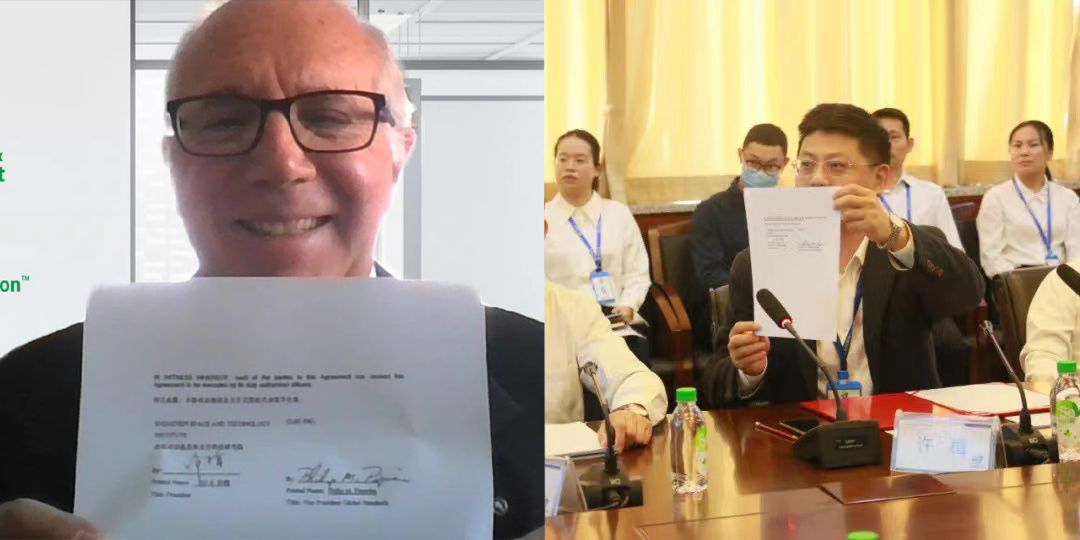Partnership With Shenzhen Space Science and Technology Institute Targets Safety and Sustainability

On Nov. 10, UL Standards & Engagement formalized a cooperation agreement on the adoption and referencing of UL safety and sustainability standards with the Shenzhen Space Science and Technology Institute (SISC), a scientific entity dedicated to conducting research that helps meet the needs of China's manned spaceflight industry and exploring the integrated development of space science and technology and civil technology. The memorandum of understanding (MOU) was signed during a virtual ceremony with 35 participants from 27 organizations including standards development organizations, associations, academia, and companies all extending congratulations on the partnership.
Under the terms of the MOU, both organizations agreed to promote reciprocal communication; avoid duplication of work efforts where possible; support harmonization efforts where there is interest; advance public awareness of safety and sustainability; and increase knowledge of each other’s standards development activities – allowing for the adoption, reference, translation, and use of UL standards as deemed appropriate by SISC. The organizations also agreed to utilize the resources of UL Standards & Engagement to help strengthen the China National Standards system.
“This agreement marks the start of broader and deeper collaboration with the Shenzhen Space Science and Technology Institute, which will allow us to work together towards the goal of elevating the standardization system in China,” said Phil Piqueira, vice president of global standards at UL Standards & Engagement. “International partnerships like this help us advance our mission of working for a safer, more secure, and more sustainable world.”
“This cooperation will allow us to build an influential international exchange platform; promote the construction of standards systems and the transformation of scientific research results; and make positive contributions to the sustainable development of green buildings, emergency disaster prevention, and mitigation,” said XU Ji, president of Shenzhen Space Science and Technology Institute.
The agreement will promote Chinese standards development and research findings with extensive cooperation on industrial sustainability development, emergency science and research, and safety data platform construction. It is also intended to help strengthen technological communication between China and the U.S.; improve China’s quality and safety level; and raise public awareness of safe, green, and sustainable development.
About Shenzhen Space Science and Technology Institute
Shenzhen Space Science and Technology Institute is a scientific research entity established in December 2014 based on a strategic cooperation agreement between the Shenzhen Municipal People's Government and the China Astronaut Research and Training Centre, initiated by the Shenzhen Institution Space Science and Technology South Centre.
The Institute is cooperating with large national enterprises to carry out the preparation and revision of national standards, industrial standards and group standards on green, sustainability, and emergency disaster prevention and mitigation.
Based on the development needs of China's manned spaceflight industry, the institute conducts basic research, technology pre-research, and key technology research around space ecology and environment technology, gravity environment effect and health maintenance technology, space food and nutrition engineering technology and related fields, actively promotes the transformation of aerospace technology achievements, and explore the cooperative scientific research model of "the use of the space for the earth" and "the use of the earth for the space," and realizes the integrated development of space science and technology and civil technology.